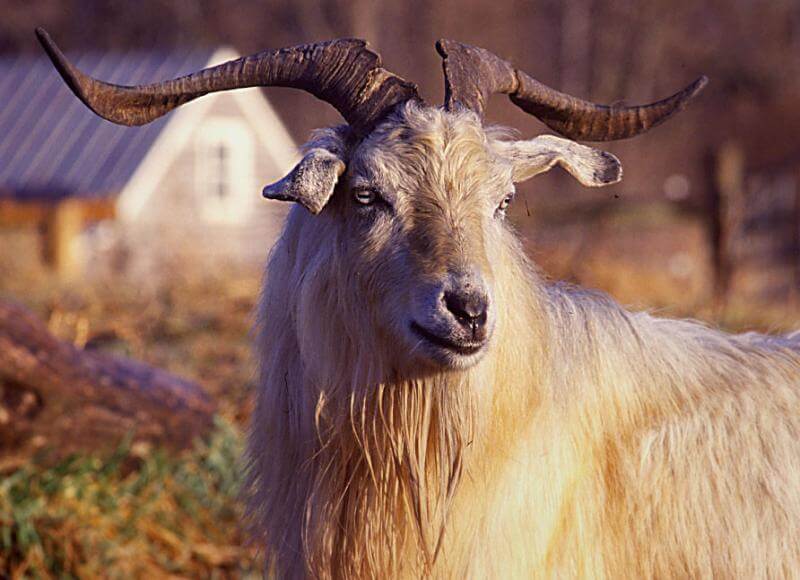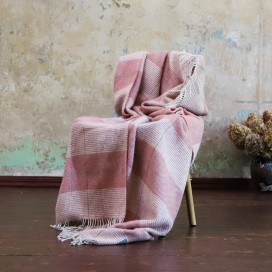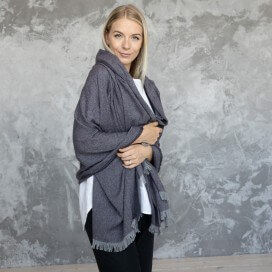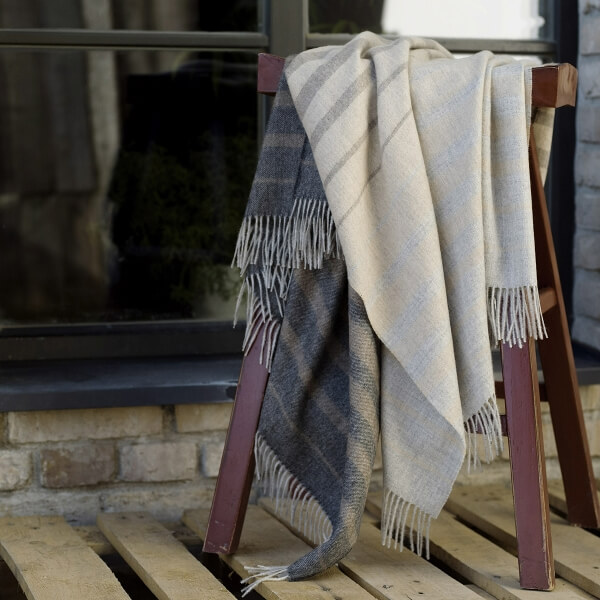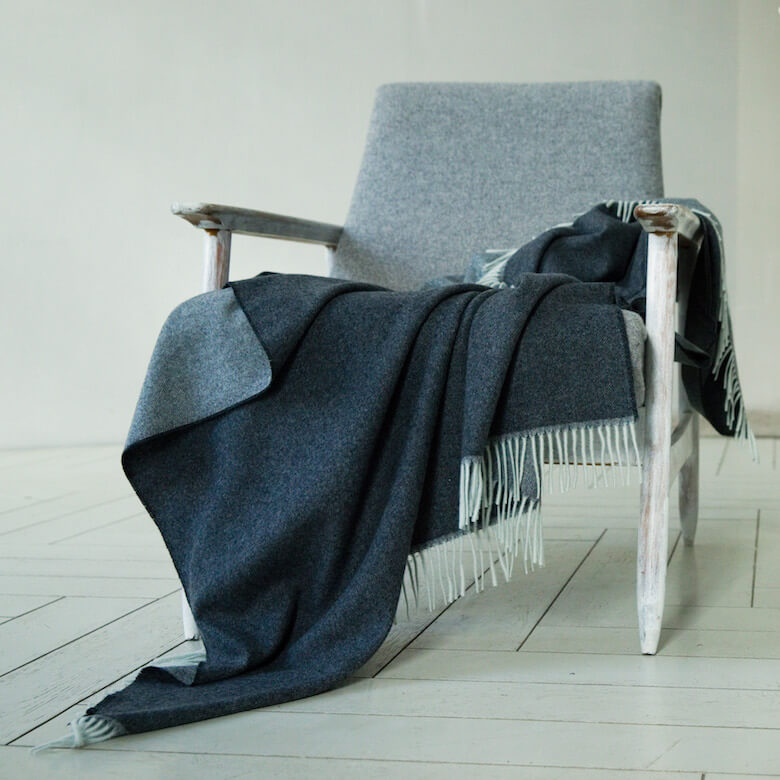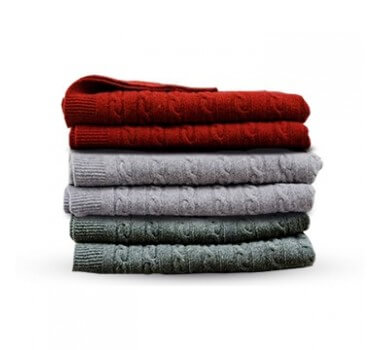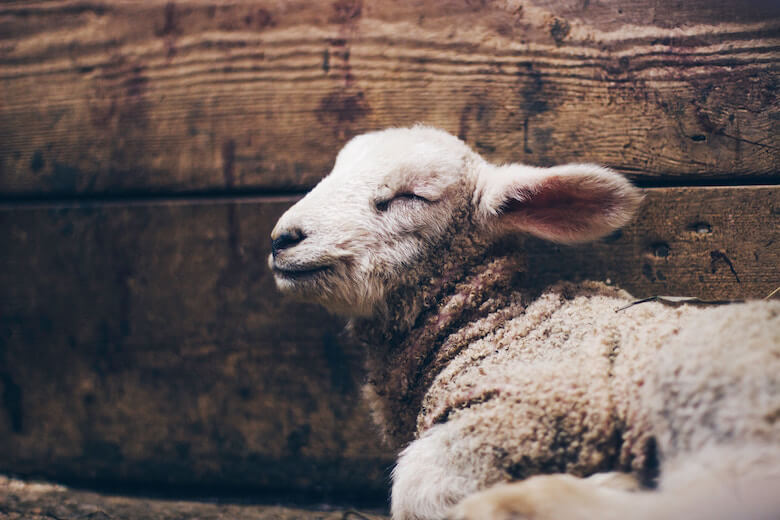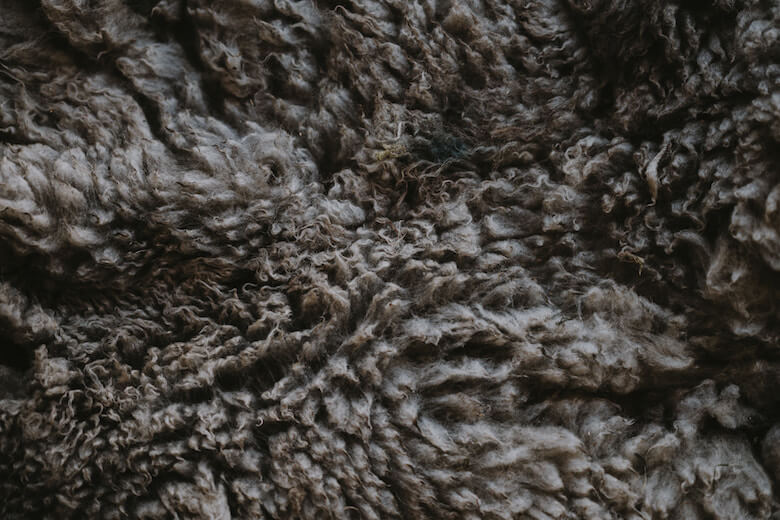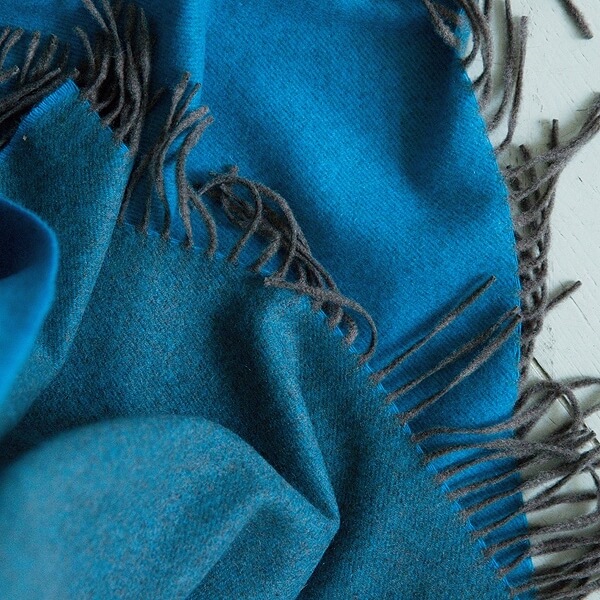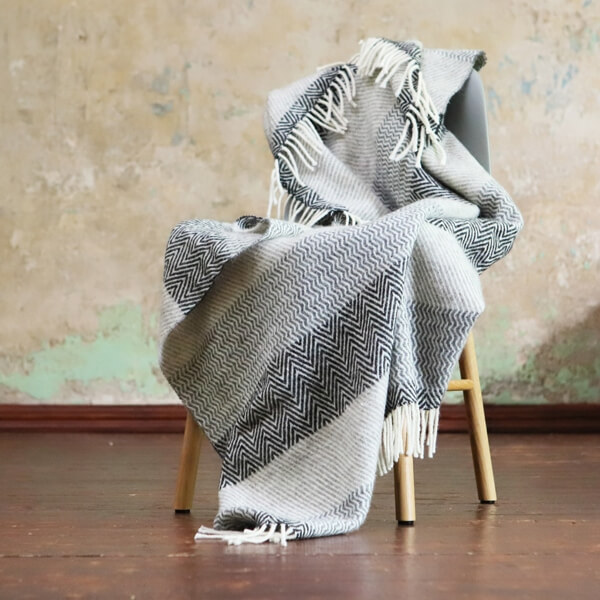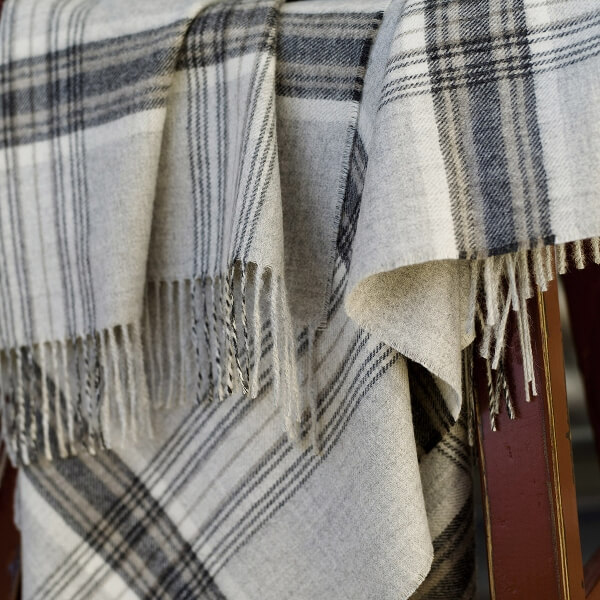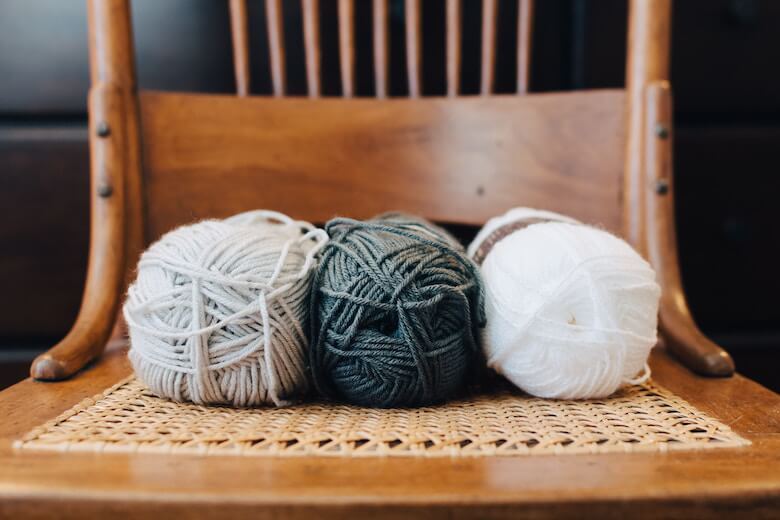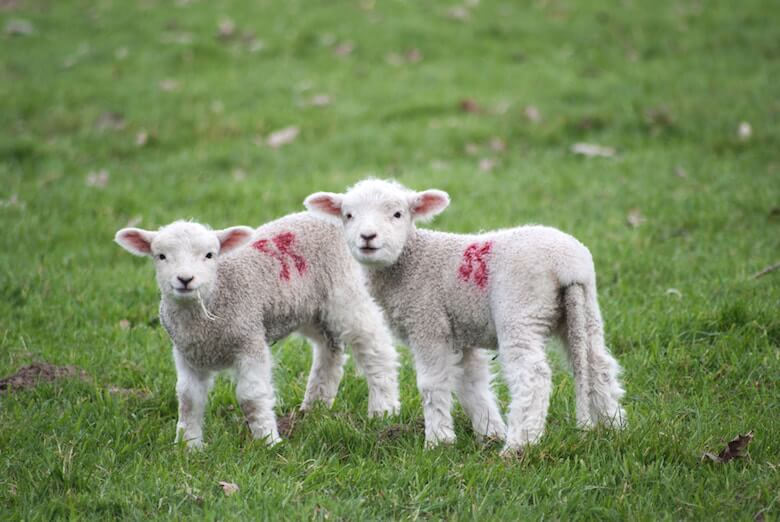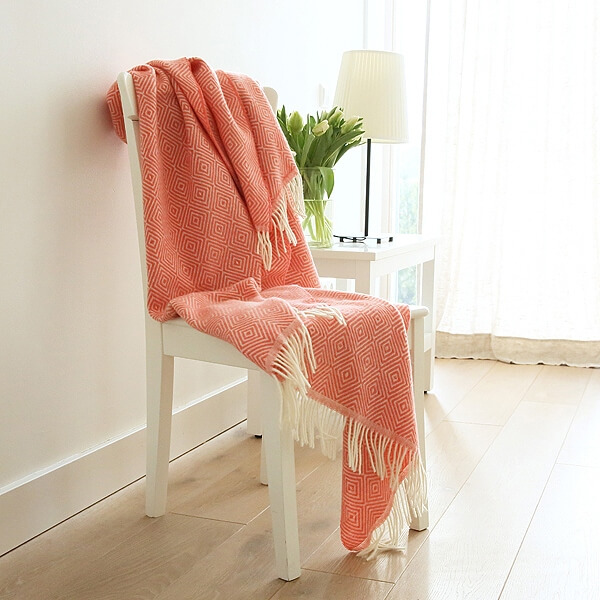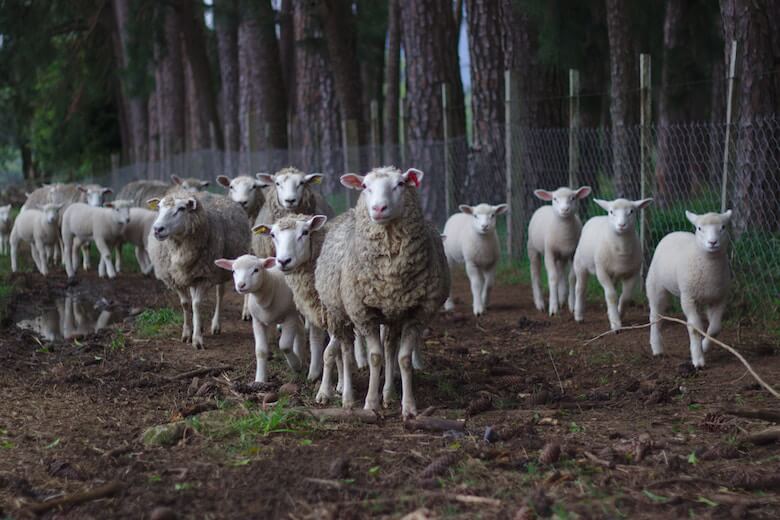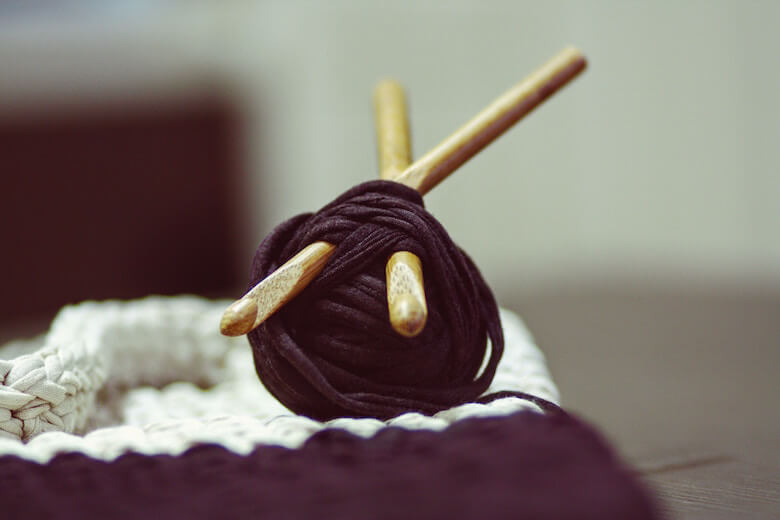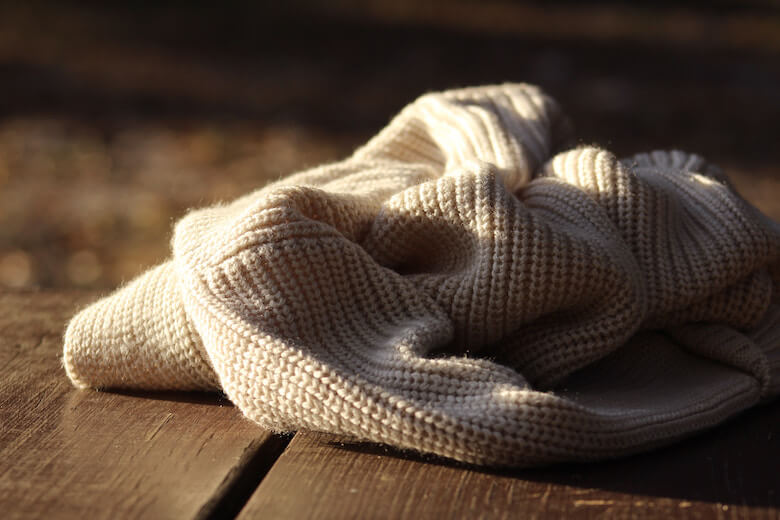With Autumn upon us and Winter approaching, our attention inevitably turns to finding new ways to keep ourselves warm. You’ve got the cosy socks and chunky knitwear, but on chilly evenings that’s not enough. One of the best ways to stay warm is a soft wool throw or blanket. With the huge variety of throws to choose from finding the right one for you and your home might feel a little overwhelming. But we are here to help.
One of the main considerations is to think about what type of wool to choose. Two of the most luxurious types – wool and mohair – make ideal throws and blankets. So, in this post we’re going to answer two questions: what is a mohair throw and what is a cashmere throw? And we’ll tell you some of the unique qualities and benefits of each.
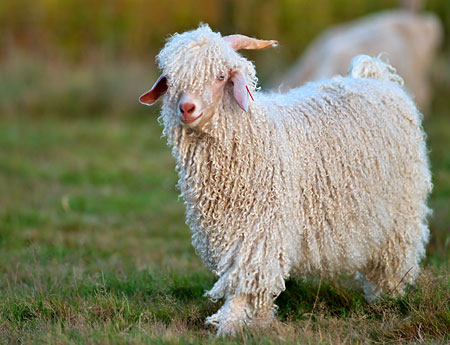
Mohair throws: benefits at a glance
- Mohair is produced from angora goats – not to be confused by the fabric we call angora, which is produced from the soft fur of angora rabbits.
- Due to its softness and sheen, mohair feels lovely to touch and is considered to be a luxurious fibre. This makes it perfect for wool throws, as they are not only warm but also non-scratchy and comfortable.
- Because of its unique structure, mohair is hypoallergenic which means that even people with wool allergies are likely not to be allergic to mohair. Warm, soft and pleasing to touch – no wonder mohair is one of the most beloved fabrics in the world for blankets and throws.
Cashmere throws: key features and qualities
- Cashmere is another unique and luxe wool. Not prickly, deliciously soft and warm, cashmere is ideal for people with sensitive skins and for children.
- A cashmere wool has superior insulating qualities yet isn’t bulky, which makes it perfect for any season. This natural fabric will keep you warm when it is cold and prevent overheating when temperatures rise.
- Lightweight cashmere throws are easy to carry around as they fold up surprisingly small and weigh very little. Simply sling in your tote bag for a chilly evening dinner out, or pack for a weekend city break over the Winter holidays.
Read more about Cashmere: The Story of Luxury and why it’s such a sophisticated, sought-after fabric.
Whether you choose a mohair throw or a cashmere throw, both will keep you snuggly and cosy, and will feel luxurious against your skin. Make sure you follow the manufacturer’s care instructions to keep your throw looking its best.

